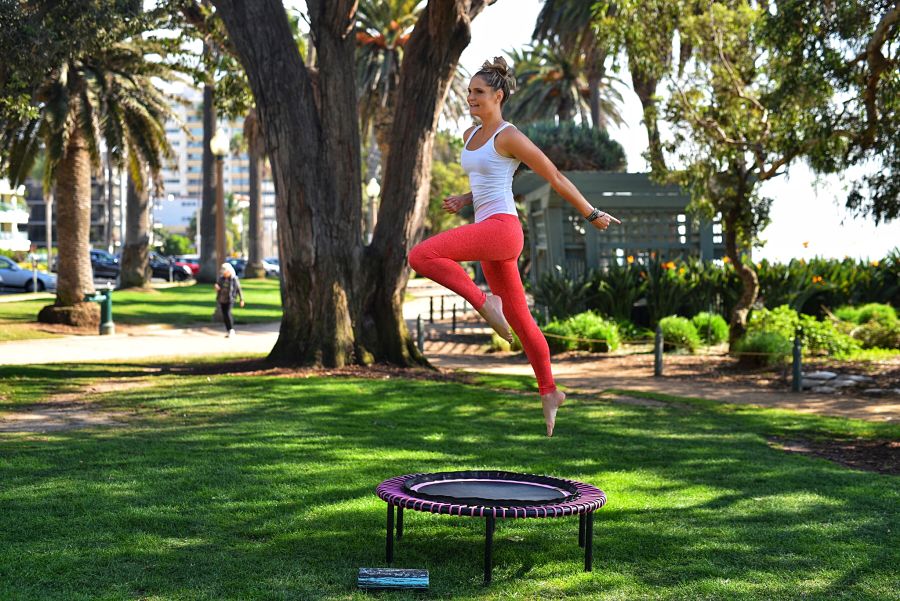The topic of fascia has become a buzzword in the wellness industry in recent years. This is mainly down to studies and scientific research that has shown a direct correlation between the health of our fascia and our physical wellbeing and mental health.
Evidence suggests that ‘our issues live in our tissues’ - in other words, when the fascia is damaged or unhealthy, this is reflected in how we feel on both a physical and an emotional level. Therefore, by working with the fascia you can really start to unravel not just those deep-seated aches and pains, but also emotional issues that might have got ‘stuck’ in the fascia, leaving you feeling an even better version of yourself!
What is fascia?
You are most likely well-versed in this if you’ve followed Lauren’s work, but as a reminder, fascia is connective tissue that is woven around each and every muscle, bone, nerve, artery and vein in our bodies, as well wrapping around all of our internal organs, including the heart, lungs, brain and spinal cord. It is quite literally what holds us together and without it - as Lauren likes to say, it is like the scaffolding of the body. Evidence suggests that fascia can be damaged by both physical and mental impact. For example, if you were in a car crash, and you were physically hurt, the fascia would be affected. But if you just witnessed the crash, recent research indicates that the traumatic experience, including perhaps how you might brace your body in reaction to what you saw, can also damage the fascia too.
In structure, fascia is likecotton-candyor a knitted sweater; tightly interwoven and web-like. If you picture an orange, it is not that dissimilar to the transparent layer of skin that surrounds each and every segment. When you cut up a chicken breast, the thin white layer surrounding the meat is fascia.
For more detail on Fascia check out one of Lauren's most popular blog posts called "What the F is Fascia?"
How does practicing yoga impact fascia?
As do all of Lo’s incredible rolling and rebounding techniques, the practice of Yin yoga works as a ‘myofascial release’ technique (myofascial release is any method that involves working with and ‘releasing’ stuck, damaged or blocked fascia).
Yin yoga is a slower form of yoga, in which poses are held for between 2-8 minutes, as opposed to the high-energy, faster-moving "yang" of a vinyasa-style yoga practice. Yin targets the‘subtle body’ (the stuff we can’t necessarily see or feel - such as our fascia).
Each and every posture in yin yoga addresses a different area of the body and therefore of the fascia (although remember every part of your fascia is interconnected, like a wetsuit). This works in a similar way to acupuncture, acupressure or a gentle massage. Through the practice of yin yoga we can rehydrate the fascia and help ‘flush’ toxins that may be trapped there. As a result, this can ease chronic pain and restore alignment and mobility to muscles and joints leaving us feeling better and healthier – both emotionally and physically.
Research has shown that our ‘energy channels’ (know as ‘nerve endings’ in Western medicine, Nadis in Indian medicine, and ‘meridians’ in traditional Chinese medicine) run through our fascia. When the fascia is damaged, a blockage is created, like a dam in a river, and the energy is no longer able to flow freely. In the practice of yin yoga, we target these energy channels to allow the prana (a term for life force, or energy). Where our attention goes, the energy flows.
During these longer holds, you may experience a mental or a physical release. A sudden rush of a strong emotion, it can be anything from joy, happiness, fear, anger or sadness to a physical release where the body then feels more free and open. The less the expectation and the more relaxed one is, the more likely experiences like this will occur.
Although yin yoga is a slow, subtle and for the most part passive practice, it can also feel very intense at times. However, it does wonders in reminding us how to ‘be’ and not just ‘do do do’, learn to ‘find comfort within the discomfort’ (because let’s face it, life will continue to throw us the odd curveball) and, all in all, relieving unnecessary stress from the mind and body. I cannot recommend it enough!
5 yin yoga poses to release fascia:
Reclined butterflyLine up a cushioned bolster with the spine and lay back on it with the soles of the feet together, knees falling out. Rest your hands comfortably by your side or on your body. Yin yoga poses should be held for between 2-5 minutes.
Supported child’s pose
Come into child’s pose with a bolster (or a pillow) placed between your legs to support the hips. Rest your forehead comfortably on the support.
Spinx/seal pose
Lie down flat on your front, on your forearms, with your elbows under the shoulders to create a gentle backbend. Move the elbows further forward to simplify, or lift the elbows away from the ground for greater intensity.
Caterpillar
In a seated position, stretch your legs apart in front of you and fold forward, resting your head on a bolster if need be.
Supported bridge
Lying down on your back, place the bolster, block or 36” foam roller underneath the hips, and elevate the pelvis and lower back. Keep your legs bent and soles of the feet on the ground, or extend the legs and the arms for a more intense, modified version.
Savasana
Always end any practice with corpse pose, lying flat on your back, with your arms and legs stretched out (with a bolster under the knees for extra lower back support).
If you want to learn more about different yoga poses, check out the ‘Intro to Yoga’ sequence live inside the Aligned Life Studio now.
And check out Lauren's recent LIVE inside the Aligned Life Collective on The Top Ways to Heal your Fascia.
Love, Charlie x






